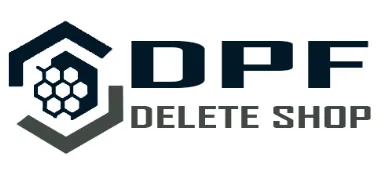SELECTIVE CATALYTIC REDUCTION (SCR)
Selective catalytic reduction (SCR), a method of exhaust gas aftertreatment, is comparable to DPFs. An SCR system aims to “reduce” NOx back to nitrogen and oxygen while the DPF deals with particulate HC. SCR has been used for more than ten years in Europe and Australia, but the EPA did not allow its use until 2007. The EPA has been reluctant to approve SCR systems because, in order for them to work, they need the use of a “consumable,” namely urea, which has to be regularly refilled, just like fuel. Because of this, the EPA’s certification for 2010 came with a set of compliance requirements. We will quickly go through the basic chemistry necessary for SCR functioning.
Chemistry SCR
When the typically innocuous nitrogen (N2) component of air oxidizes to compounds of oxygen and nitrogen due to circumstances in the combustion chamber, NOx is produced. SCRs make an effort to “reduce” these chemicals back to the inert elements of oxygen and nitrogen that make up the air we breathe.
Rhodium has been the catalyst in NOx reduction catalytic converters, which have been used in gasoline-fueled vehicle engines for over 30 years, although they have the drawback of only working when the AFR is at stoichiometric or richer. When employed, they are integrated into a more sophisticated device known as a NOx adsorber catalyst, which is covered previously in this chapter. They do not work as standalone devices in low burn diesel engines.
Fluid urea
SCRs employ consumable urea to do what the gasoline-fueled engine’s rhodium catalyst accomplishes. Natural gas-derived nitrogen molecules that have crystalline form make up urea. In North America, diesel exhaust fluid (DEF) is sold as aqueous urea, which is urea in a solution with water. A computer-controlled injection or doser system injects the DEF into the exhaust gas stream. Following injection, the urea breaks down to ammonia, which then combines with NOx substances to break them down again into oxygen and nitrogen.
SCR Benefit
The majority of the cause for the increase in fuel efficiency of the current engine compared to 2007, the year when DPFs were required, was the adoption of SCR by all but one of the major truck OEMs in 2010. The requirement to delay fuel injection timing to avoid NOx dump is significantly diminished with SCR. As a result, the combustion phase may be finished sooner in the cycle, minimizing PM dump and relieving the DPF of some of its work. This enables the ECM to control injection timing closer to the optimal fuel efficiency window. Additionally, it can minimize or completely remove EGR cut-percentages, which greatly lessens engine fouling.
Management of SCR
SCR may be controlled by the engine ECM or an aftertreatment module, depending on the OEM. In a refuelable container, 32% of the urea is present in aqueous/water form. AdBlue is the name given to aqueous urea in Europe by one company, however DEF is what the trucking industry prefers to call it.
With the help of compressed air from the on-chassis, DEF is occasionally injected upstream from the aftertreatment canister. The engine ECM or its specific aftertreatment module must accurately regulate DEF injection. In certain instances, the aftertreatment module combines the duties of an SCR management system and a dosing control module (DCM). By having its own address on the J1939 bus or by using a custom data bus, this module may connect to the ECM.
DEF injection needs to be carefully controlled and supervised. Ammonia leakage into the exhaust system can happen when there is too much urea present. A deficit causes NOx emissions.
Onboard the vehicle, DEF is stored in tanks with 20–50 gallon capacity (75 to 190 liters). Since it is an aqueous urea solution, it must be freeze-protected during the winter because it freezes at 12°F (8°C). The amount of DEF consumed varies depending on how the engine is operated, or how much NOx has to be reduced, and ranges between 1% and 5% of the fuel used. For instance, during engine cranking and startup, no DEF is injected.
Cooling of SCR Injectors and System Purge
Because it lacks the large flow volume of fluid that engine fuel injectors need to achieve their requisite cooling, the SCR injector is often cooled by engine coolant. While the engine is operating, sensors continuously check the SCR efficiency. When the engine is turned off, the DEF supply pump reverses and pulls the fluid from the lines back into the DEF tank. Normally, this procedure takes 60 seconds. The DEF lines are constantly checked by thermostats while the engine is operating and, if necessary, electrically heated to avoid freezing.

